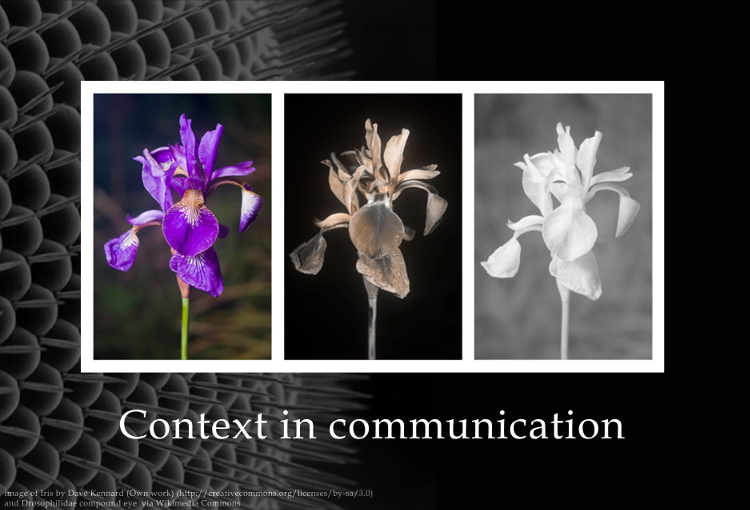Context in Communication
With contributions from URBASHI BASU
How do we convey innumerable thoughts with a very limited number of words? We use different elements of language to endow words with contextual information and this allows us to articulate our thoughts meaningfully. An analogous situation is faced by living cells that need to sense changes in their environment, pass on this information to the cell interior and mount appropriate responses. While there are myriad external stimuli for the cell, the intermediate molecules available within the cell to amplify these signals are limited in number. And yet, the cell is able to use this discrete repertoire of signaling intermediates to effect specific physiological responses. How then, is the process of signal transduction coupled to contextual information for the final physiological output?
One molecular intermediate of information transfer in cells is phosphatidylinositol-4, 5-bisphosphate (PIP2), a lipid species present at the plasma membrane of cells. The degradation of PIP2 by phospholipase C (PLC) enzymes is a key part of signal transduction needed to encode the detection of signals by numerous cell surface receptors, such as the growth factor receptors. In addition intact PIP2 itself binds proteins and regulates other cellular processes at the plasma membrane such as vesicular transport and cytoskeletal function. The molecular basis by which such diverse roles are performed by the same chemically identical entity, PIP2, has been a subject of great interest. How does a cell distinguish PIP2 molecules that need to be hydrolysed from those that must encode information without undergoing further metabolism? One hypothesis is that there are localized pools of PIP2 which may be accessed by different regulatory molecules. However, biological evidence to substantiate this hypothesis has remained elusive.
In their recently published PLOS Genetics paper, Purbani Chakrabarti and Sourav Kolay from the Padinjat lab now provide proof for the idea that the plasma membrane contains distinct “pools” of PIP2 that are set aside to perform these diverse functions and that distinct enzymes are used to synthesize unique pools of this lipid at the plasma membrane in the context of space and time. The researchers analyzed phototransduction (or the sense of sight), the process by which cells detect light and transduce it into an electrical signal that is conveyed to the brain, in the fruit-fly Drosophila melanogaster. In this system, photons trigger PIP2 hydrolysis by PLC. Phototransduction begins when photons hitting the fly eye cause a conformational change in the light sensing protein rhodopsin. This results in hydrolysis of PIP2 by PLC into intermediate molecules, which activate ion channels resulting in depolarization. These events transduce light detection into electrical activity of neurons which result in the ability of the fly to “see”.
Chakrabarti et.al found that activity of phosphatidylinositol-4-phosphate 5-kinase, an enzyme crucial for the generation of PIP2, was required exclusively for phototransduction, and not vescicle trafficking or cytoskeletal function. Photoreceptors express two genes (sktl and dPIP5K) that encode this activity. The authors generated a knockout of dPIP5K and found that these animals display an abnormal electrical response to light. Using a novel imaging technique to follow PIP2 turnover in intact flies during light responses, they found that dPIP5K controls PIP2 resynthesis during phototransduction. In contrast, non-PLC dependent functions of PIP2, such as vesicular transport and the remodeling of the actin cytoskeleton were unaffected in dPIP5K mutants. Their results demonstrate that the enzyme dPIP5K supports a pool of PIP2 that is readily available to PLC but does not sustain other non-PLC mediated PIP2 dependent processes. Those functions are controlled by a pool of PIP2 generated by the other enzyme, sktl. The results suggest the existence of distinct enzymes that generate pools of PIP2 to control specific molecular processes in photoreceptors.
According to Raghu Padinjat, “Research into the mechanisms by which photoreceptors work has played crucial roles in our understanding of cellular communication strategies in biology. The Drosophila eye has played an important role in unravelling basic principles underlying signal transduction. TRP channels, now widely recognized as a key element for the transduction of multiple sensory modalities in humans were first discovered in the Drosophila eye. Studies of the vertebrate eye were also critical to our understanding of G-protein coupled receptor signalling, a transduction pathway critical in the context of many disease processes. The eye is the only part of the brain that can be directly visualized from the outside and many diseases of the brain manifest themselves in the human eye. Perhaps Shakespeare was probably not far off from the truth when he wrote -The eye is the window to the soul”.
The paper can be accessed at PLOS Genetics http://journals.plos.org/plosgenetics/article?id=10.1371/journal.pgen.1004948

Comments
Post new comment